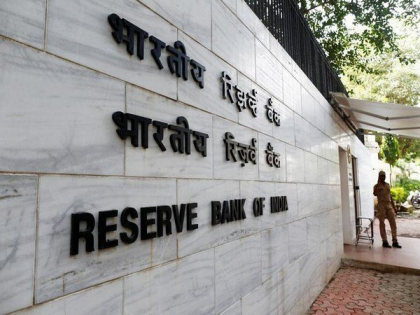RBI releases monthly bulletin of April 2023
By ANI | Published: April 21, 2023 10:51 PM2023-04-21T22:51:37+5:302023-04-21T22:55:23+5:30
Mumbai (Maharashtra) [India], April 21 : The Reserve Bank of India (RBI) on Friday released its monthly bulletin of ...

RBI releases monthly bulletin of April 2023
Mumbai (Maharashtra) [India], April 21 : The Reserve Bank of India (RBI) on Friday released its monthly bulletin of April 2023. The bulletin includes Monetary Policy Statement April 3, 5 and 6, 2023, Monetary Policy Report April 2023, one speech, five articles and current statistics.
According to a statement from RBI, the five articles are State of the Economy; Recent Regime Reversal in Inflation: The Indian Experience; Capital Outlay of Indian States: An Empirical Assessment of its Role and Determinants; Industrial Relations Code and Labour Productivity: A Cross-Country Meta-Analysis and A Composite Indicator of Realty Sector Activity in India.
According to the first article, RBI said global economic conditions are beset by heightened uncertainty as financial conditions remain volatile and financial markets are on edge. In India, aggregate demand conditions remain resilient, supported by a rebound in contact-intensive services.
Highlighting the drop in consumer price index (CPI)-based inflation, the article stated, "Expectations of a bumper rabi harvest, the fiscal thrust on infrastructure, and the revival in corporate investment in select sectors augur well for the economy. In response to monetary policy actions and supply-side measures, headline CPI inflation has gradually declined from its peak of 7.8 per cent in April 2022 to 5.7 per cent in March 2023 and is projected to ease further to 5.2 per cent in Q4 (fourth quarter): 2023-24."
The second article, titled 'Recent Regime Reversal in Inflation: The Indian Experience', was authored by Michael Debabrata Patra, Joice John and Asish Thomas George, examined recent regime shifts in inflation in India.
According to the article, since the second half of 2022-23, the Indian economy is showing signs of transiting to a low inflation regime, as indicated by a decline in inflation persistence, softening of its underlying trend, reduction in broad-basing and a fall in the contribution of imported inflation.
The article also mentioned, "The contribution of cyclically-sensitive inflation emanating from categories such as household goods and services, education and housing is picking up in the recent period. Hence, monetary policy has to be in readiness to act pre-emptively to ensure that inflation weathers demand-pull and is guided to the target."
The third article, Capital Outlay of Indian States: An Empirical Assessment of its Role and Determinants, written by Deba Prasad Rath, Bichitrananda Seth, Samir Ranjan Behera and Anoop K Suresh, investigates the relationship between states' capital outlay and gross state domestic product (GSDP) while also identifying the factors that influence the States' capital outlay decisions. The analysis brings out the need for balancing the requirement for higher capital outlay with the goal of keeping the overall debt levels low and sustainable.
According to the article, there is a significant and positive association between States' capital outlay and gross state domestic product (GSDP). Higher levels of debt hinder states' ability to invest in capital outlay, especially when the levels of debt are in the higher quantiles. States exhibit counter-cyclical behaviour in their allocation of capital outlay. However, they respond more aggressively during periods of negative output gap.
Fourthly, Industrial Relations Code and Labour Productivity: A Cross-Country Meta-Analysis, authored by Shruti Joshi and Rakhe P Balachandran, highlighted how "India recently codified the 29 Central labour laws into four labour codes viz., codes on (i) wages, (ii) industrial relations, (iii) social security, and (iv) occupational safety, health and working conditions. The code on industrial relations has also introduced fixed-term employment (FTE). Using a meta-regression analysis, this article evaluates the impact of FTE on labour productivity across countries."
"Though FTE is new to India, it has been in operation in many European countries for several years, increasing firms' flexibility in labour management. FTE has a positive and significant effect on labour productivity," it added.
The fifth A Composite Indicator of Realty Sector Activity in India written by Dipak R. Chaudhari, Akanksha Handa, Priyanka Upreti, and Saurabh Ghosh, underlined the fact that "The realty sector plays a crucial role in India in terms of being a major employment provider, an essential avenue for savings in physical form for households, a key contributor to the country's gross value added (GVA), and as an early warning indicator. However, construction GVA data are available on a quarterly basis with two-month lag.
The article aims to reduce the information gap by constructing a realty sector activity indicator using a variety of high-frequency indicators and a dynamic factor model.
Disclaimer: This post has been auto-published from an agency feed without any modifications to the text and has not been reviewed by an editor
Open in app